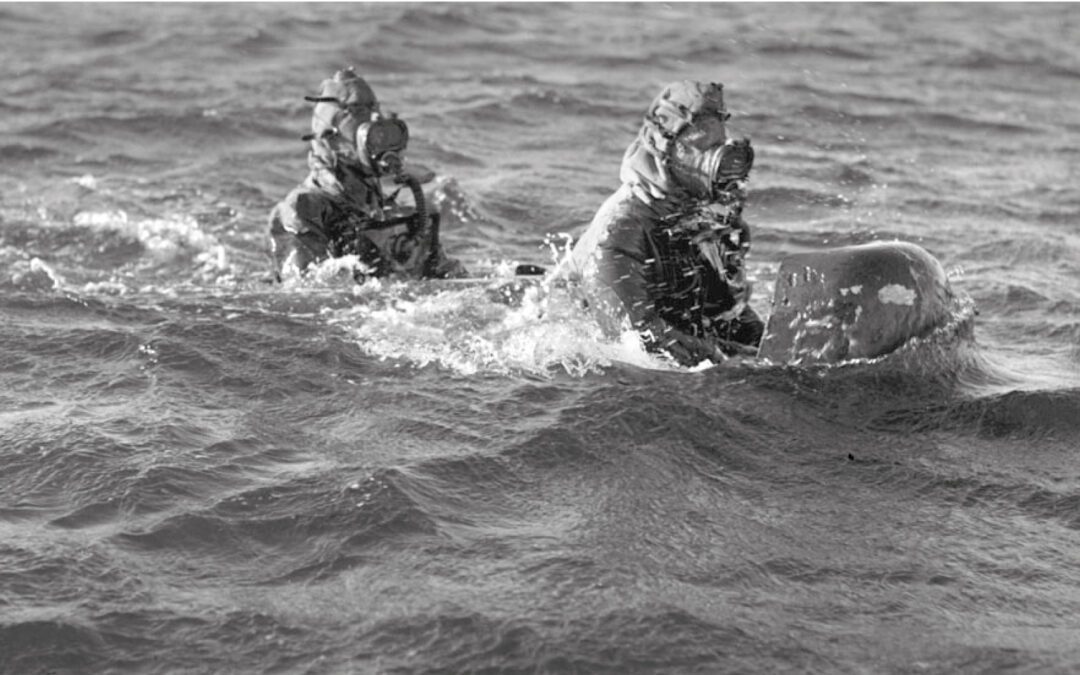For today’s #ForgottenFriday, we are diving deep into the history of the Human Torpedo!
Quite possibly one of the most risky inventions seen during the war, the Human Torpedo saw new technology and tactics meet in an attempt to “undermine” the enemy!
The Maiale
The Italians were the first to use human torpedoes in the Second World War, and were swiftly copied by the British, Germans and Japanese. The Italian Maiale ‘Pig’ was 6.7 metres (22 ft) long, with a detachable explosive nose. It had a two-man crew who sat astride the torpedo wearing rubber suits and oxygen cylinders and masks.
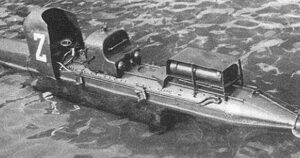
The Maiale in water
In operation, the Maiale torpedo was carried by another vessel (usually a conventional submarine), was launched near the target. Most manned torpedo operations were at night and during the new moon to cut down the risk of being seen. Attacks in 1940 were unsuccessful but in 1941, the Italian navy (Regia Marina) successfully entered the harbour of Alexandria and damaged the two British battleships HMS Queen Elizabeth and HMS Valiant. On 19th December 1941, two Italian frogmen were caught sitting on the bow buoy of the British Battleship Valiant in Alexandria Harbour. Under interrogation they said that they had got into difficulties outside the harbour and had to abandon their equipment and swim. A few minutes later there was an explosion under the of the tanker Sagonia.
The Chariot
Copying the Italian example, the British developed the Chariot, based on a 7.6 metre torpedo, specifically to attack the German battleship Tirpitz at Trondheim in Norway. On the night of 30/31 October 1942, two Chariots were taken into the Trondheimfjord slung under a fishing boat, but on the approach while still about 15 kilometres from Tirpitz, the Chariots broke loose and sank. The Chariot crews however made it to Sweden as planned.
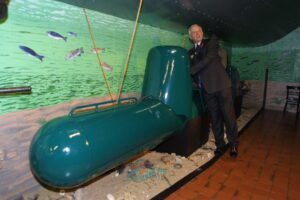
The Chariot on display at Eden Camp
On 28th October 1944, a successful attack was made by a pair of Chariots on two ships at Phuket in Siam. The crew were taken to the target area by the submarine Trenchant, motored in on their Chariots, and clamped the explosive heads to the bilges of the two target merchant ships, the Submatra and the Volpi. Having returned to the Trenchant, two explosions were heard, and both ships were out of action for the rest of the war. It was the last and only completely successful Chariot operation, out a total of eight, in the whole war.
Other developments
Neger
This extreme form of a genuine human torpedo carried a second torpedo underneath, which was launched at the target. Speed: 4 knots (7.4 km/h), and about 10 hours at 3 knots. One seat. This manned torpedo was named after its inventor Richard Mohr.
Marder and Biber
These very small submarines carried two torpedoes and one or two men. There were other types that never ran into production. In July 1944 Nazi Germany’s Kriegsmarine introduced their human torpedoes to harass allied positions at Normandy anchorages. Although they could not submerge, they were difficult to observe at night and inflicted several losses on allied vessels. They were also used to harass allied vessels in the invasion of southern France but were largely ineffective.
Kaiten
The Kaiten was a manned fast torpedo intended to be piloted directly into its target, in practice becoming a suicide weapon. As such, its operation differed substantially from the human torpedo as used by Italian, British and German militaries.

A captured Kaiten torpedo at the USS Bowfin Museum in Hawaii
British Human Torpedo Display, the Chariots, was opened by HRH Prince Philip, The Duke of Edinburgh KG KT was opened on 8th November 2012.
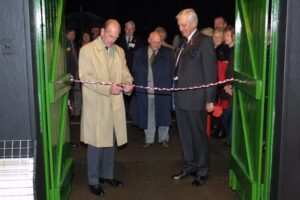
British Human Torpedo Display, the Chariots, was opened by HRH Prince Philip, The Duke of Edinburgh KG KT was opened on 8th November 2012
Prince Philip had a special connection with World War II human torpedoes. He agreed to come to the camp after hearing that a man researching the history of his Italian father, with the help of Eden Camp, had discovered the man’s father had been in one of the Italian mini subs which had attacked Alexandria Harbour. Prince Philip said he had had a close run-in there with the Italian Maiali charioteers in 1941.
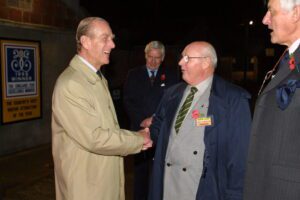
HRH Prince Philip with Eden Camp’s founder Stan Johnson, 2012
He added: “I could have been blown up,” he told Stan Johnson.
Prince Philip spent some time in the escapers and evaders hut while he was at Eden Camp, sometimes talking in fluent French to a selection of veterans brought specially from this country and also France, Holland and Spain to meet him. Italian naval officers were there to meet him and veterans from the Escape Lines Memorial Society as well as museum staff.
You can see the rare collection we have on display in our Mess Huts!

